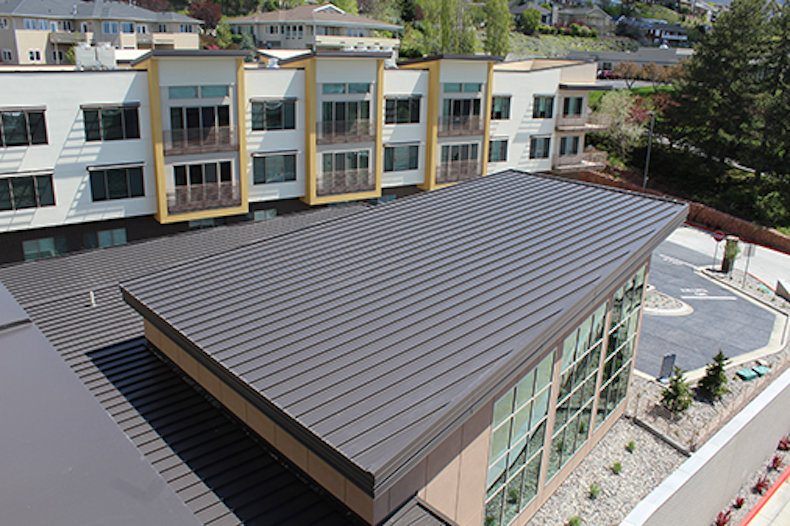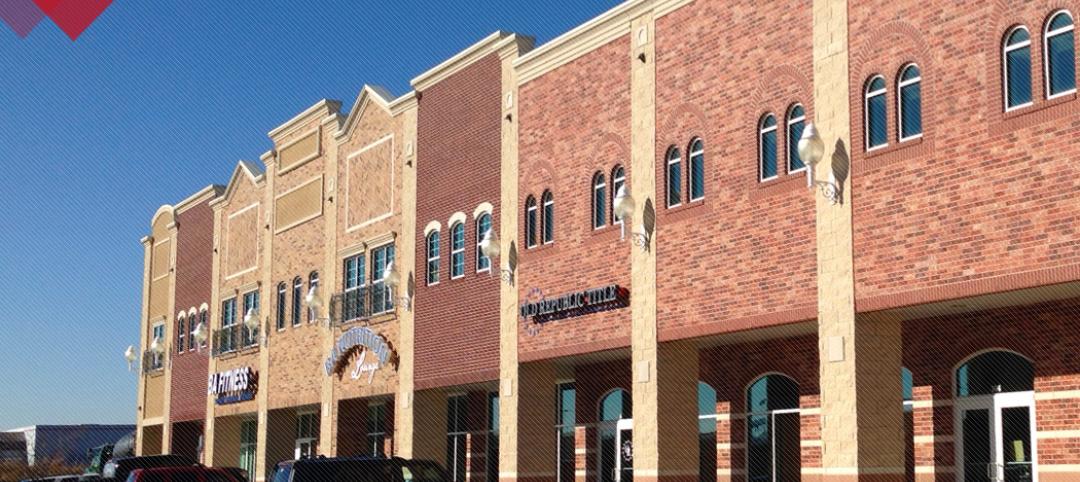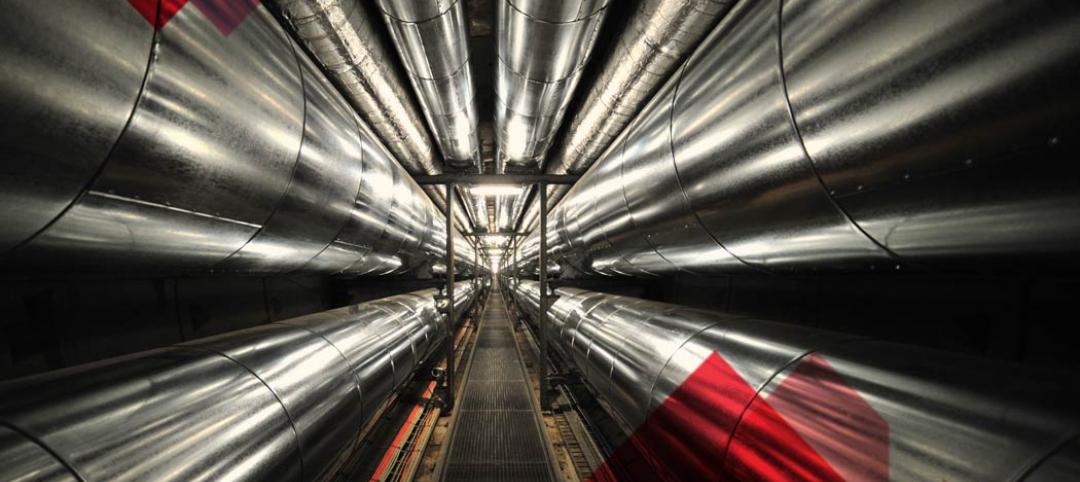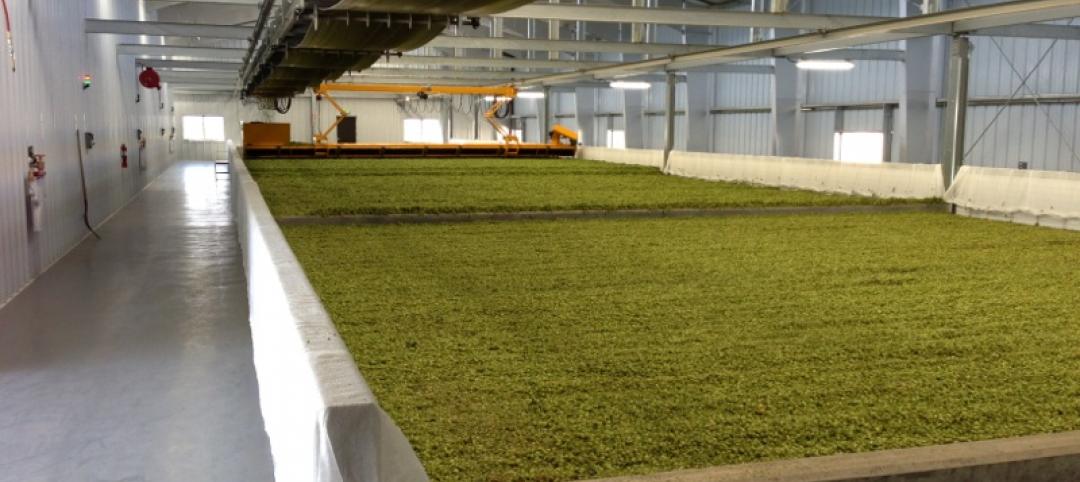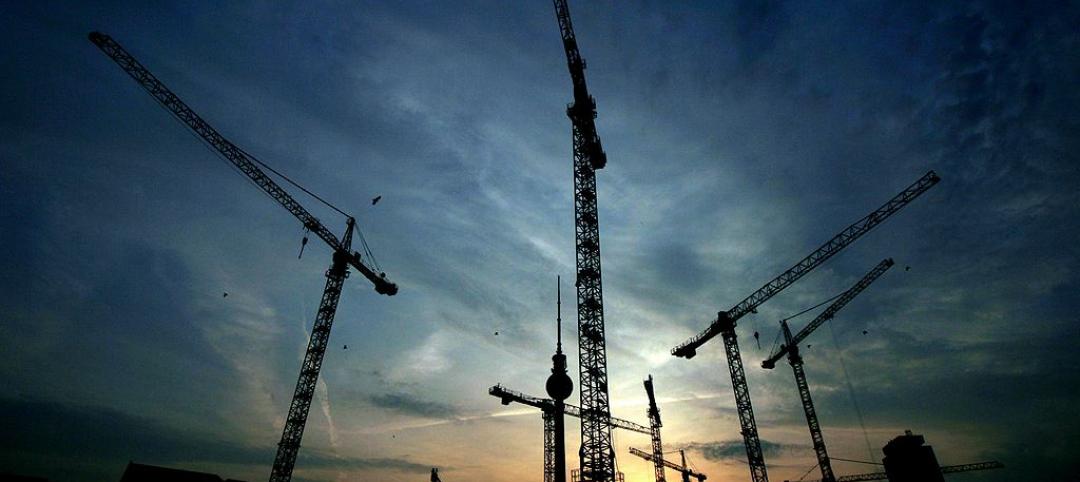Many large, commercial, low-rise buildings such as warehouses, big box retail stores, agriculture structures, aviation facilities, etc. often don’t benefit from steeply-sloped roofs the way residences and small commercial buildings might. This is because a steep roof slope would add unwanted height and uneccesary construction cost.
Instead, these buildings are more appropriately built with so-called “flat roofs.” This is actually is a misnomer since the roofs are, in fact, “low-slope roofs” which the the National Roofing Contractors Association (NRCA) defines as any roof with “a slope at or less than 3:12.” Anything steeper is considered a “high-slope roof.” With this in mind, let’s look at some key points to consider when designing and constructing a low-slope roof.
Low-Slope Roofing Materials
When it comes to selecting low-slope roofing products, there are generally three fundamental choices:
- Asphalt/ Bituminuous Products: The traditional commercial roofing norm for many years, the use of asphalt/bituminous products has dwindled as newer, more appealing options have emerged.
- Flexible Membrane Roofing: This roofing material can be made from a variety of types of plastic/polymer based materials (commonly known as EPDM, TPO, PVC, or others). Rolls of the selected membrane are laid out on the roof structure and secured in place either with properly spaced mechanical fasteners (screws with large washers) or with a continuous layer of adhesive.
- Metal Roofing: Sometimes overlooked, metal roofing is suitable for different roof slopes. Many metal roofs that use a standing-seam system are rated for use on roofs with a pitch as low as ½:12.
When considering which type of roofing material to use for a building project, there are a number of significant differences that illustrate why metal roofing is often preferred.
Engineered For Superior Performance
Standing-seam metal roofing is designed and engineered specifically for use on low-slope roofs as it meets a number of performance requirements:
- Water resistance: Water and other forms of precipitation don’t penetrate through metal and or through properly formed standing seams where the metal panels are joined. That is the reason they can tolerate such low slopes, allowing the water to drain away slowly and predictably without leakage.
- Rigidity: The rigid nature of metal means that the opportunity for ponding (i.e. standing water on a roof) is eliminated. This is not always the case with asphalt/bituminous or membrane roofing systems.
- Drainage: Water on a metal roof typically flows to the roof’s edge where it meets with gutters and downspouts that carry the water away from the building. Other roofing systems rely on interior drainage piped inside the building. This takes up space and has the potential to leak water inside the building and cause damage.
- Wind Resistance: Standardized uplift testing of metal roofing shows that it can perform as well or even better than membrane systems that are either mechanically-fastened or fully-adhered.
- Durability: Because of it’s engineered design and use of high quality coatings, the most cited advantage of metal roofing is its long-term strength and durability. That translates to a longer roofing life—50 years or more compared to the other two roofing types that are only rated for 20 or 30 years.
- Puncture Resistance: Low-slope roofing tends to get walked on and may also take direct abuse from hail and other hazards. Metal roofing is more resistant to punctures than asphalt/bituminous or membrane roofing and better able to tolerate foot traffic and hail without getting punctured.
- Construction/ Installation Ease: Metal roofing panels are sized and pre-fabricated to match the building where they are being installed. That typically means it takes less time in the field to place and install metal roofing compared to other types of roofing. Further, installation of metal panels is not restricted by temperature or other weather conditions since they can easily tolerate a wide range of either and still perform as intended. On low-slope roofs, their surface is also easy to walk on without risking falls or other safety hazards.
Cost-Effectiveness
Using metal roofing on low-slope roof systems has been shown to be quite cost effective in a number of ways:
- Fewer labor hours as a result of the ease of installation saves money during construction.
- Competitive material costs, particularly if the metal roofing is part of a total metal building package from a single manufacturer.
- Minimal maintenance requirements and aversion to rusting, mold growth and decay that save the building owner money over time.
This all adds up to a very favorable life-cycle cost.
Considering the performance, cost and life-cycle benefits of metal roofing panels, this material should always be considered as a viable option for low-slope roofing systems. Metal roofing manufacturers like MBCI can not only help you select the right metal roofing products, but can also provide the information and resources needed to ensure they’re installed properly.
View examples of low-slope metal roofing projects and contact your local MBCI representative to start your project today.
Related Stories
Sponsored | | Oct 13, 2014
Think you can recognize a metal building from the outside?
It’s getting more and more difficult to spot a metal building these days. What looks like brick, stucco or wood on the outside could actually be a metal building in disguise. SPONSORED CONTENT
Sponsored | | Sep 30, 2014
How project managers can manage technology
Not long ago, the role of a construction project manager revolved around working with people: employees, vendors, consultants, designers, subcontractors and owners. Today, project managers primarily manage information. SPONSORED CONTENT
| Sep 24, 2014
5 business lessons from a 43-year Star veteran
Mary Ed Cain was supposed to be born a boy. That was the first time she surprised everyone. The second time came on a daily basis during her 43-year career at Star Building Systems. SPONSORED CONTENT
| Jul 21, 2014
16 utility questions to answer during your building project
We need electricity to power our building projects, along with water and gas and a faultless sanitation system. That’s what we think about when we think about utility requirements for our building project, but are we missing something? SPONSORED CONTENT
Sponsored | | Jul 17, 2014
A major hop forward
The construction of efficient metal buildings has helped Perrault Farms expand its hops-harvesting business.
| Jul 17, 2014
22 land questions to decide if your build site works
When you’re ready to build, land needs a serious amount of attention. Since it can singlehandedly shift your building plans, land must be investigated, questioned, and eyed from every angle. SPONSORED CONTENT
| Jul 9, 2014
The one misstep that could be slowing your company’s growth
Change. It’s inevitable. And success for any professional may very well depend on how well we adapt to it. SPONSORED CONTENT
| May 27, 2014
Contractors survey reveals improving construction market
The construction industry is on the road to recovery, according to a new survey by Metal Construction News. Most metrics improved from the previous year’s survey, including a 19.4% increase in the average annual gross contracting sales volume. SPONSORED CONTENT
| May 11, 2014
8 starter questions to answer when thinking about building
So, are you ready to start building? Completing these eight questions will help you answer that confidently. SPONSORED CONTENT
| Apr 25, 2014
A radiant barrier FAQ: Everything you wanted to know but were afraid to ask
There are many examples of materials developed for the space program making their way into everyday life and radiant barriers are just that. SPONSORED CONTENT


